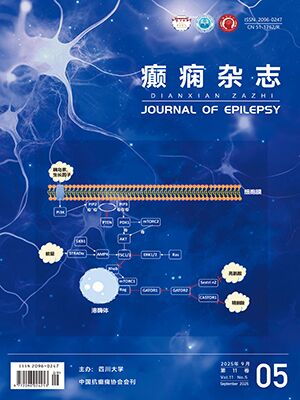| 1. |
Mmenkes JH, Alter M, Steigleder GK, et al. A sex-linked recessive disorder with retardation of growth, peculiar hair, and focal cerebral and cerebellar degeneration. Pediatrics, 1962, 29: 764-779.
|
| 2. |
Paulsen M, Lund C, Akram Z, et al. Evidence that translation reinitiation leads to a partially functional Menkes protein containing two copper-binding sites. Am J Hum Genet, 2006, 79(2): 214-229.
|
| 3. |
Møller LB, Tümer Z, Lund C, et al. Similar splice-site mutations of the ATP7A gene lead to different phenotypes: classical Menkes disease or occipital horn syndrome. Am J Hum Genet, 2000, 66(4): 1211-1220.
|
| 4. |
Kaler SG, Gahl WA. Application of a copper blotting method to the study of Menkes disease. Biol Trace Elem Res, 1993, 38(1): 73-81.
|
| 5. |
Kaler SG, Holmes CS, Goldstein DS, et al. Neonatal diagnosis and treatment of Menkes disease. N Engl J Med, 2008, 358(6): 605-614.
|
| 6. |
Tønnesen T, Kleijer WJ, Horn N. Incidence of Menkes disease. Hum Genet, 1991, 86(4): 408-410.
|
| 7. |
Danks DM, Cartwright E, Campbell PE, et al. Is Menkes' syndrome a heritable disorder of connective tissue. Lancet, 1971, 2(7733): 1089.
|
| 8. |
Ahuja A, Dev K, Tanwar RS, et al. Copper mediated neurological disorder: visions into amyotrophic lateral sclerosis, Alzheimer and Menkes disease. J Trace Elem Med Biol, 2015, 29: 11-23.
|
| 9. |
Tchan MC, Wilcken B, Christodoulou J. The mild form of menkes disease: a 34 year progress report on the original case. JIMD Rep, 2013, 9: 81-84.
|
| 10. |
Sirleto P, Surace C, Santos H, et al. Lyonization effects of the t(X; 16) translocation on the phenotypic expression in a rare female with Menkes disease. Pediatr Res, 2009, 65(3): 347-351.
|
| 11. |
Kaler SG. Neurodevelopment and brain growth in classic Menkes disease is influenced by age and symptomatology at initiation of copper treatment. J Trace Elem Med Biol, 2014, 28(4): 427-430.
|
| 12. |
Goldstein DS, Holmes CS, Kaler SG. Relative efficiencies of plasma catechol levels and ratios for neonatal diagnosis of menkes disease. Neurochem Res, 2009, 34(8): 1464-1468.
|
| 13. |
Park HD, Moon HK, Lee J, et al. A novel ATP7A gross deletion mutation in a Korean patient with Menkes disease. Ann Clin Lab Sci, 2009, 39(2): 188-191.
|
| 14. |
程晓悦, 肖江喜, 袁新宇, 等. Menkes病的MR影像表现. 中华放射学杂志, 2013, 47(7): 599-602.
|
| 15. |
Koprivsek K, Lucic M, Kozic D, et al. Basal ganglia lesions in the early stage of Menkes disease. J Inherit Metab Dis, 2010, 33(3): 301-302.
|
| 16. |
Manara R, D'Agata L, Rocco MC, et al. Neuroimaging changes in Menkes disease, Part 1. AJNR Am J Neuroradiol, 2017, 38(10): 1850-1857.
|
| 17. |
Manara R, Rocco MC, D'agata L, et al. Neuroimaging changes in Menkes disease, Part 2. AJNR Am J Neuroradiol, 2017, 38(10): 1858-1865.
|
| 18. |
Vairo F, Chwal BC, Perini S, et al. A systematic review and evidence-based guideline for diagnosis and treatment of Menkes disease. Mol Genet Metab, 2019, 126(1): 6-13.
|




